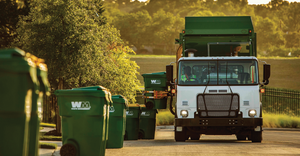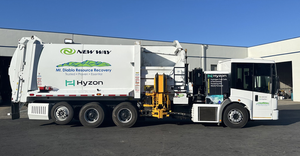Can We Rescue Glass Recycling?
Glass is at the very heart of longstanding recycling programs. Yet the need to surgically extract glass to keep our recycling systems alive is a decision we’ve been asked to consider. Regardless of your role in the recycling industry, it is hard to sidestep the topic.
Glass isn’t going away from the waste stream any time soon. It remains the consumers’ packaging of choice for many products. Buying things bottled and jarred in glass is one thing. Getting that glass from our kitchens to the back end of a material recovery facility (MRF) in a marketable condition is another. As far as covering the cost, well, there’s the rub.
Issues with glass recycling aren’t new. In spite of being the material that most folks expect to recycle, we have yet to come up with a system of recovering glass that is universally efficient, quality driven and cost effective. With a nod to the Container Recycling Institute (CRI), the exception may be container deposit programs, but those systems aren’t always flawless nor without other challenges.
If you are a contractor or a buyer, services that include handling recycled glass either have been or will be a serious point of your negotiations. For some it has proven to be a downright deal breaker. Early in 2015, the industry’s largest players announced that glass should and would be eliminated from single-stream programs. Once unthinkable to suggest, acknowledging that glass must go was a game changer. Suddenly, those struggling with glass issues for some time, related or not to single stream, felt permission to follow suit without justification or apologies. An endless stream of headlines announcing the elimination of glass collection in both curbside and dropoff programs is evident.
Looking for a fix
By its very nature, the scrap and recycling industry attracts opportunists. Nowhere does the old adage about one door opening as another closes ring so true. In response to the current state of glass recycling, a smattering of glass-only collection systems is evolving, mostly private sector initiated in conjunction with local governments. While glass is being pulled primarily from residential municipal programs, these services are designed to target low-hanging fruit in the hospitality industry.
Looking to commercial sources to offset the tons eliminated from residential programs is a steep hill to climb. Let’s look at the statistics. The U.S.Environmental Protection Agency (EPA) tells us that glass packaging, what we target for collection, represents between 4-5 percent of the waste stream. The most recent EPA data suggests that we recover about 28 percent of the glass generated. Approximately 80 percent is generated by residential sources.
To understand what losing residential glass collection could mean, a study done by Ohio EPA provides some clues. At the time of the study, the majority of Ohio’s solid waste districts did not include glass in their recycling collection programs. Consequently, 90 percent of the glass generated in Ohio’s municipal waste stream was ultimately disposed in landfills.
The Glass Packaging Institute (GPl) offers brief descriptions for a number of bar and restaurant programs that participated in their in-depth survey of bar, restaurant and hotel programs. The full report includes a number of recommended best practices. Since the study was published five years ago and the number of participants was limited, we looked at newer programs as well. Whether as a result of the survey’s recommendations or by pure coincidence, these other programs stayed true to GPI’s findings.
A typical program with a mixture of bars, restaurants and metro hotels yields 100 to 150 tons per month. That’s roughly the equivalent amount of glass that could be recovered each month from a community with a population of 12,000, if it performed at the national rate. That’s not a bad return for the program. When you consider that we’re looking at one program per city with average populations of 300,000, the odds of replacing lost residential tons are not in our favor. In Las Vegas, rich with hotels, the recovery looks much different, but that’s an exception.
On the upside, targeting the commercial sector where separating glass can be enforced by management could result in higher quality. The economics are less encouraging.
By and large GPl’s survey showed commercial customers reluctant to pay for recycling services. Therefore, grants and other subsidies are used to provide what is described as cost-neutral service. Looking at newly developed programs, it is safe to say government assistance continues to play a big role. At least one of the service providers with local ties admitted that the program was viewed as a community service and not a profit center. Many customers do pay fees, but the survey’s recommendations suggest these probably do not represent the full cost of the service. That seems problematic if we expect glass recycling to be sustainable.
Less than half of the states have local glass manufacturers. Slightly more have processors. Even where quality is high, transportation costs due to weight and distance remain stumbling blocks for many areas of the country. This is particularly true when faced with a processing fee for the delivered material.
That brings us back full circle to those container deposit laws. There’s plenty of data demonstrating these return systems result in high yields of cleaner material. Glass manufacturers tell us they rely heavily on these systems as reliable sources of feedstock. Yet, ironically users of glass packaging can be the loudest voices opposing these laws. We understand and can find merit in many of their objections, but it also leaves us with questions.
If glass recycling is essential to glass manufacturers and packagers, we wonder who should be responsible for the cost of recovering those bottles and jars where no deposit incentives exist? Other industries reliant on recycled feedstock have made adjustments to ensure the flow of material necessary for their operations remained affordable to separate and recover at the source. Can we expect the same effort here? If not, does it signify there is no value in our efforts to salvage this material?
Single-stream recyclers have thrown up their hands and declared they can’t handle the added expense of glass contamination and equipment damage. Local governments have responded by eliminating glass collection programs. Are we nearing the demise of glass recycling?
The industry clearly is sending out an SOS. However, in response to this emergency message, without change at many levels, glass processors and manufacturers should not expect 100 billion bottles to wash up at their doors any time soon.
Michele Nestor is the President of Nestor Resources Inc., based in the Greater Pittsburgh area, and chair of the board of directors, of the Pennsylvania Recycling Markets Center, Penn State, Harrisburg.
About the Author
You May Also Like


